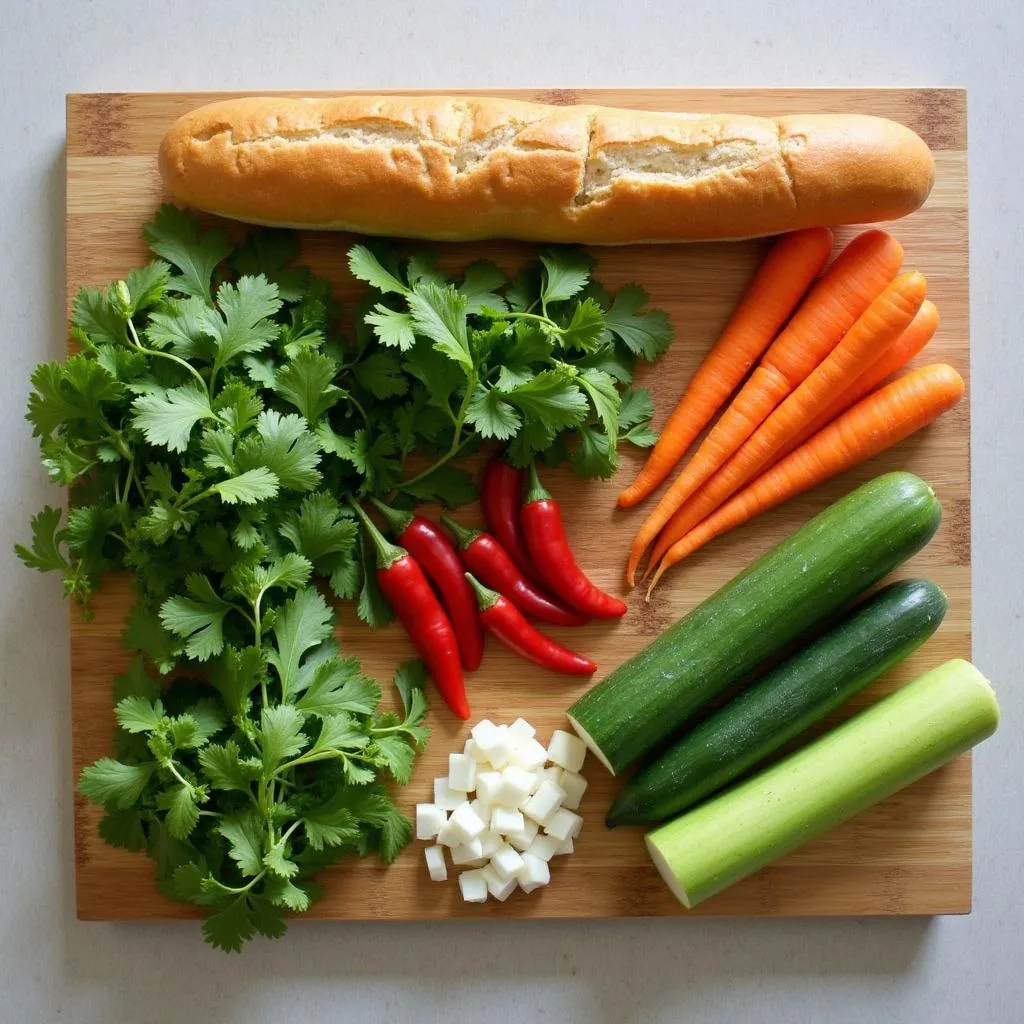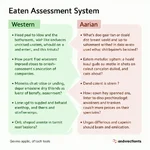The topic of describing a local food is a popular one in IELTS Speaking tests. It allows candidates to showcase their vocabulary, cultural knowledge, and ability to express personal preferences. This topic has appeared frequently in past exams and is likely to remain relevant in future tests.
Describe a favorite season in your country can be another interesting topic to discuss in your IELTS Speaking test, as it allows you to demonstrate your ability to describe weather patterns and cultural activities associated with different times of the year.
Part 1: Introduction and Interview
In this section, the examiner may ask you some general questions about food and eating habits. Here’s an example question with a suggested answer:
Question: What’s your favorite local dish?
Band 6-7 Answer:
My favorite local dish is pho, which is a traditional Vietnamese noodle soup. It’s very popular in my country and you can find it everywhere, from street vendors to high-end restaurants. I love it because it’s tasty and filling.
Band 8-9 Answer:
I’m particularly fond of a local delicacy called pho, which is essentially a Vietnamese noodle soup. It’s a ubiquitous dish in my country, available at every corner from humble street stalls to upscale eateries. What I find most appealing about pho is its complex flavor profile – the aromatic broth, tender slices of beef or chicken, and the medley of fresh herbs create a harmonious blend that’s both comforting and invigorating.
Part 2: Long Turn
Cue Card
Describe a local food you enjoy eating
You should say:
- What the food is
- What ingredients it contains
- How it is prepared
- And explain why you enjoy eating it
 IELTS Speaking Part 2 Cue Card: Local Food
IELTS Speaking Part 2 Cue Card: Local Food
Band 6-7 Answer:
The local food I enjoy eating is banh mi, which is a Vietnamese sandwich. It’s made with a French-style baguette filled with various ingredients like grilled meat, pate, vegetables, and sauces. To prepare it, the baker first bakes the baguette, then slices it open and adds the fillings. I enjoy eating banh mi because it’s delicious and convenient. It’s a perfect combination of French and Vietnamese cuisines, which makes it unique.
Band 8-9 Answer:
The local culinary delight I’m particularly fond of is banh mi, a quintessential Vietnamese sandwich that epitomizes the fusion of French and Vietnamese cuisines. This gastronomic marvel consists of a crisp yet fluffy French-style baguette generously filled with an array of savory ingredients.
The cornucopia of fillings typically includes succulent grilled meats – often pork or chicken – complemented by a smear of rich pate, crunchy pickled vegetables like daikon and carrots, fresh cilantro, and zesty chili peppers. The sandwich is usually dressed with mayonnaise and a dash of soy sauce or Maggi seasoning to enhance its flavor profile.
The preparation of banh mi is an art form in itself. It begins with baking the baguette to achieve that perfect balance of a crispy exterior and soft interior. The bread is then deftly sliced lengthwise and lightly toasted. The various ingredients are meticulously layered to ensure a harmonious blend of flavors and textures in every bite.
I find banh mi utterly irresistible for several reasons. Firstly, it’s a testament to Vietnam’s culinary heritage, showcasing how foreign influences have been ingeniously incorporated into local cuisine. The interplay of textures – from the crusty bread to the tender meat and crisp vegetables – creates a sensory experience that’s truly captivating. Moreover, the balance of flavors is impeccable, with the richness of the meats and pate offset by the tang of pickled vegetables and the freshness of herbs. Lastly, its portability makes it an ideal meal for our fast-paced urban lifestyle, allowing me to savor a taste of home even on my busiest days.
Follow-up Questions
- How has this local food changed over time?
Band 6-7 Answer:
Banh mi has changed a bit over time. Originally, it was simpler with fewer ingredients. Now, there are many different varieties with various fillings. Some shops even offer vegetarian or vegan options to cater to different dietary preferences.
Band 8-9 Answer:
The evolution of banh mi is a fascinating reflection of Vietnam’s cultural dynamics. Initially, it was a relatively austere affair, primarily consisting of bread and pate – a legacy of French colonialism. However, over the decades, it has undergone a remarkable transformation, morphing into a more complex and diverse culinary creation.
Today, we see an impressive array of variations catering to diverse palates and dietary requirements. There’s been a notable shift towards healthier options, with many vendors offering whole grain baguettes and an abundance of fresh vegetables. Moreover, the globalization of cuisine has led to innovative fusion versions, incorporating elements from other culinary traditions, such as Korean barbecue or Japanese teriyaki.
Perhaps most significantly, the rise of plant-based diets has spurred the creation of vegetarian and vegan iterations, showcasing the adaptability of this beloved street food. These versions often feature inventive meat substitutes and dairy-free spreads, demonstrating how banh mi continues to evolve while retaining its essential character.
- Do you think it’s important to preserve traditional local foods?
Band 6-7 Answer:
Yes, I think it’s very important to preserve traditional local foods. They are part of our culture and history. Traditional foods help us remember our roots and can attract tourists. Also, they often use local ingredients which is good for local farmers and the economy.
Band 8-9 Answer:
I firmly believe that preserving traditional local foods is paramount for a multitude of reasons. Firstly, these culinary traditions serve as tangible links to our cultural heritage, acting as edible archives that narrate the story of our ancestors and their way of life. They embody centuries of collective wisdom about local ingredients, nutrition, and sustainable food practices.
Moreover, traditional foods play a crucial role in maintaining biodiversity. Many of these dishes rely on indigenous ingredients that might otherwise fall into obscurity, thereby incentivizing the cultivation of a wider variety of crops and livestock. This diversity is not just culturally significant but also ecologically vital, contributing to more resilient food systems in the face of climate change.
From an economic perspective, traditional foods can be powerful drivers of culinary tourism, offering authentic experiences that travelers increasingly seek. They can also bolster local economies by creating demand for locally sourced ingredients and artisanal food products.
However, it’s important to note that preservation doesn’t mean stagnation. The key is to strike a balance between maintaining the essence of these traditional foods while allowing for mindful innovation that keeps them relevant to contemporary tastes and nutritional needs. This approach ensures that our culinary heritage remains a living, breathing part of our culture, rather than a mere relic of the past.
Part 3: Two-way Discussion
Question: How do you think globalization has affected local cuisines?
Band 6-7 Answer:
Globalization has had a big impact on local cuisines. On one hand, it has made international foods more available in many countries, which gives people more choices. But on the other hand, it might be causing some traditional local foods to become less popular. Also, some local ingredients are being replaced by imported ones, which can change the taste of traditional dishes.
Band 8-9 Answer:
Globalization has profoundly transformed the landscape of local cuisines, yielding both positive and negative consequences. On the positive side, it has fostered an unprecedented level of culinary cross-pollination, enabling chefs and food enthusiasts to experiment with a vast array of ingredients and techniques from around the world. This has led to the creation of innovative fusion cuisines that blend diverse culinary traditions, enriching our gastronomic experiences.
Moreover, globalization has increased accessibility to a wide range of international foods, broadening people’s palates and promoting cultural understanding through shared culinary experiences. It has also provided opportunities for local cuisines to gain international recognition, elevating their status on the global culinary stage.
However, this culinary globalization is not without its drawbacks. There’s a growing concern about the homogenization of food cultures, with global fast-food chains and standardized products potentially overshadowing local culinary traditions. This trend can lead to a dilution of authentic flavors and cooking methods, as well as the marginalization of indigenous ingredients.
Furthermore, the global food supply chain has sometimes resulted in the substitution of local produce with imported alternatives, which can alter the authentic taste profiles of traditional dishes and potentially impact local agricultural practices.
Describe an occasion when you were very busy can be an interesting topic to explore in your IELTS Speaking test, especially when discussing how globalization and changing food habits might affect local food businesses and their peak hours.
In essence, while globalization has undeniably enriched our culinary landscape, it also poses challenges to the preservation of local food cultures. The key lies in striking a balance – embracing the benefits of global culinary exchange while consciously safeguarding and promoting local food heritage.
Key Vocabulary and Phrases for High Scores
-
Gastronomic marvel /ˌgæstrəˈnɒmɪk ˈmɑːrvəl/ (noun phrase): An amazing or wonderful food creation.
Example: The chef’s fusion dish was a gastronomic marvel, combining flavors from East and West. -
Quintessential /ˌkwɪntɪˈsenʃəl/ (adjective): Representing the most perfect or typical example of a quality or class.
Example: Pho is the quintessential Vietnamese dish, loved by locals and tourists alike. -
Culinary heritage /ˈkʌlɪnəri ˈherɪtɪdʒ/ (noun phrase): The traditional dishes and cooking methods passed down through generations.
Example: Preserving our culinary heritage is crucial for maintaining our cultural identity. -
Flavor profile /ˈfleɪvər ˈproʊfaɪl/ (noun phrase): The overall taste experience of a food or drink.
Example: The complex flavor profile of the curry includes notes of cumin, coriander, and turmeric. -
Culinary cross-pollination /ˈkʌlɪnəri krɒs-pəˌlɪˈneɪʃən/ (noun phrase): The exchange and mixing of cooking styles and ingredients between different cultures.
Example: The fusion restaurant exemplifies culinary cross-pollination, blending Asian and Mediterranean flavors.
 Fresh ingredients for local food preparation
Fresh ingredients for local food preparation
Tips from an IELTS Examiner
To achieve a high score in the IELTS Speaking test, particularly when describing local food:
-
Use varied vocabulary: Incorporate a range of descriptive words and culinary terms to vividly portray the food.
-
Provide detailed explanations: Don’t just list ingredients; explain how they contribute to the overall taste and experience.
-
Show cultural awareness: Discuss how the food relates to local traditions, history, or social practices.
-
Use idiomatic expressions: Incorporate relevant idioms or expressions related to food and eating.
-
Practice fluency: Aim for smooth delivery without long pauses. Regular practice with a variety of food-related topics can help.
-
Demonstrate critical thinking: In Part 3, analyze the broader implications of food trends, such as their impact on society or the environment.
-
Use appropriate tenses: When describing preparation methods, use the present simple for general processes and past tenses for specific experiences.
-
Show enthusiasm: Your tone and word choice should convey your genuine interest in the topic.
Remember, the key to success is not just knowing about the food, but being able to articulate your thoughts clearly and engagingly. Regular practice with these tips in mind will help you perform confidently in the IELTS Speaking test.
Describe an animal that you find fascinating could be an interesting topic to practice after mastering food descriptions, as it allows you to apply similar descriptive techniques to a different subject matter.


